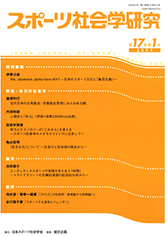Volume 17, Issue 1
Displaying 1-7 of 7 articles from this issue
- |<
- <
- 1
- >
- >|
-
2009Volume 17Issue 1 Pages 3-12
Published: March 20, 2009
Released on J-STAGE: October 05, 2016
Download PDF (436K)
-
2009Volume 17Issue 1 Pages 13-14
Published: March 20, 2009
Released on J-STAGE: October 05, 2016
Download PDF (135K)
Orijinal
-
2009Volume 17Issue 1 Pages 15-30
Published: March 20, 2009
Released on J-STAGE: October 05, 2016
Download PDF (640K) -
2009Volume 17Issue 1 Pages 31-44
Published: March 20, 2009
Released on J-STAGE: October 05, 2016
Download PDF (677K) -
2009Volume 17Issue 1 Pages 45-57
Published: March 20, 2009
Released on J-STAGE: October 05, 2016
Download PDF (893K) -
2009Volume 17Issue 1 Pages 59-71
Published: March 20, 2009
Released on J-STAGE: October 05, 2016
Download PDF (530K) -
2009Volume 17Issue 1 Pages 73-84
Published: March 20, 2009
Released on J-STAGE: October 05, 2016
Download PDF (511K)
- |<
- <
- 1
- >
- >|
